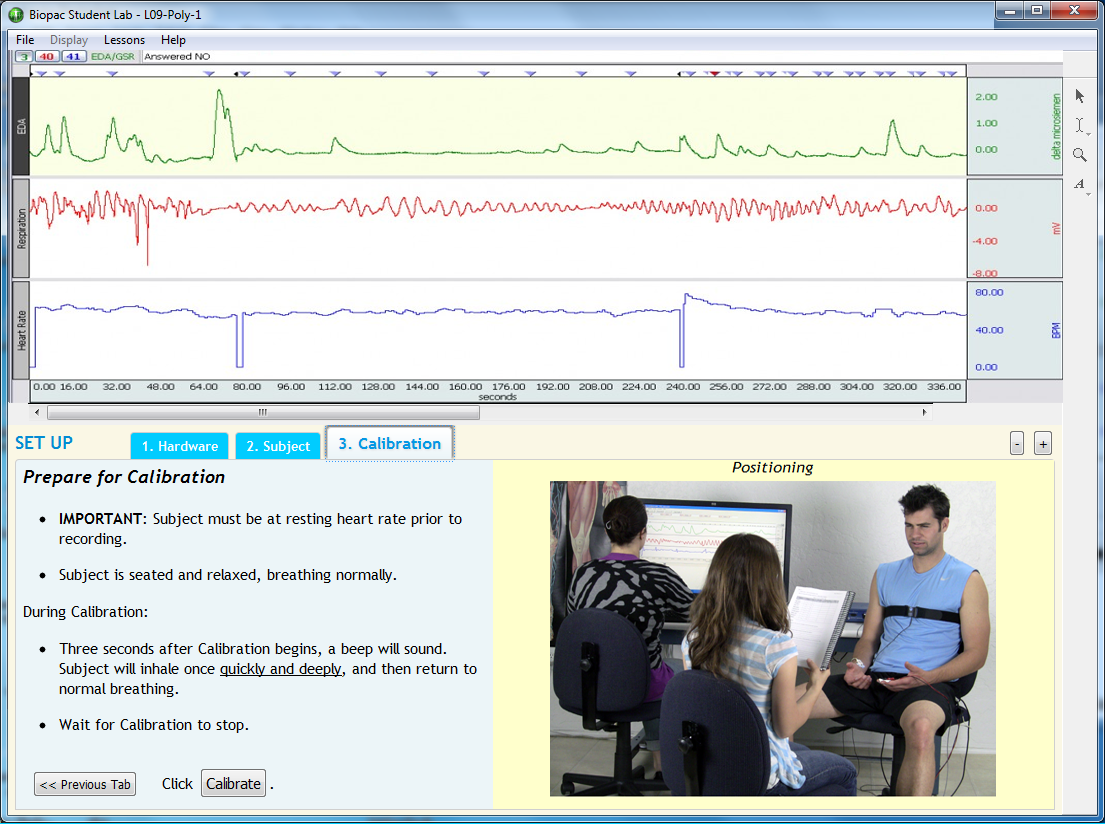L09 EDA & Polygraph

This BSL lesson demonstrates a number of important autonomic concepts and is a great introduction to EDA (a.k.a. GSR).
Students record the standard physiological measures of a polygraph and examine the effects of cognitive behavior and emotion. Students record changes in respiratory rate, heart rate and skin resistance. Each Subject answers a number of simple questions and watches a presentation to stimulate a response. It is possible to use a variety of different stimuli for the lesson.
The lesson is extremely flexible and allows the instructor to look at a variety of autonomic principles.
Experimental Objectives
-
To become familiar with procedures for recording electrodermal activity.
-
To observe and record the changes in respiratory rate, heart rate, and skin resistance associated with somatic and special sensory stimuli.
-
To observe and record changes in respiratory rate, heart rate , and skin resistance associated with cognitive behavior and emotion.
-
To analyze a 3-channel polygraph recording under various experimental conditions to gain a better understanding of polygraphy and its potential for use and misuse.
Tasks Performed by the Student
- Record respiration, heart rate and EDA.
- Sit down and relax.
- Answer a series of simple questions.
- Have their face touched.
- See a visual presentation.
- Answer additional questions.
Videos
BSL L09 Recording
BSL L09 Calibration
Biopac Student Lab Student Download
Lesson Hardware
This lesson requires a Biopac Student Lab (BSL) System and the following hardware. If your BSL System does not include all hardware items, expand your system by selecting required items below. For more details, review the Lesson: L# BSL Lessons - see the Lab Manual or launch BSL; A# and H# BSL PRO Lessons, click the PDF link above to review full setup, recording, and analysis procedures.
Stay Connected